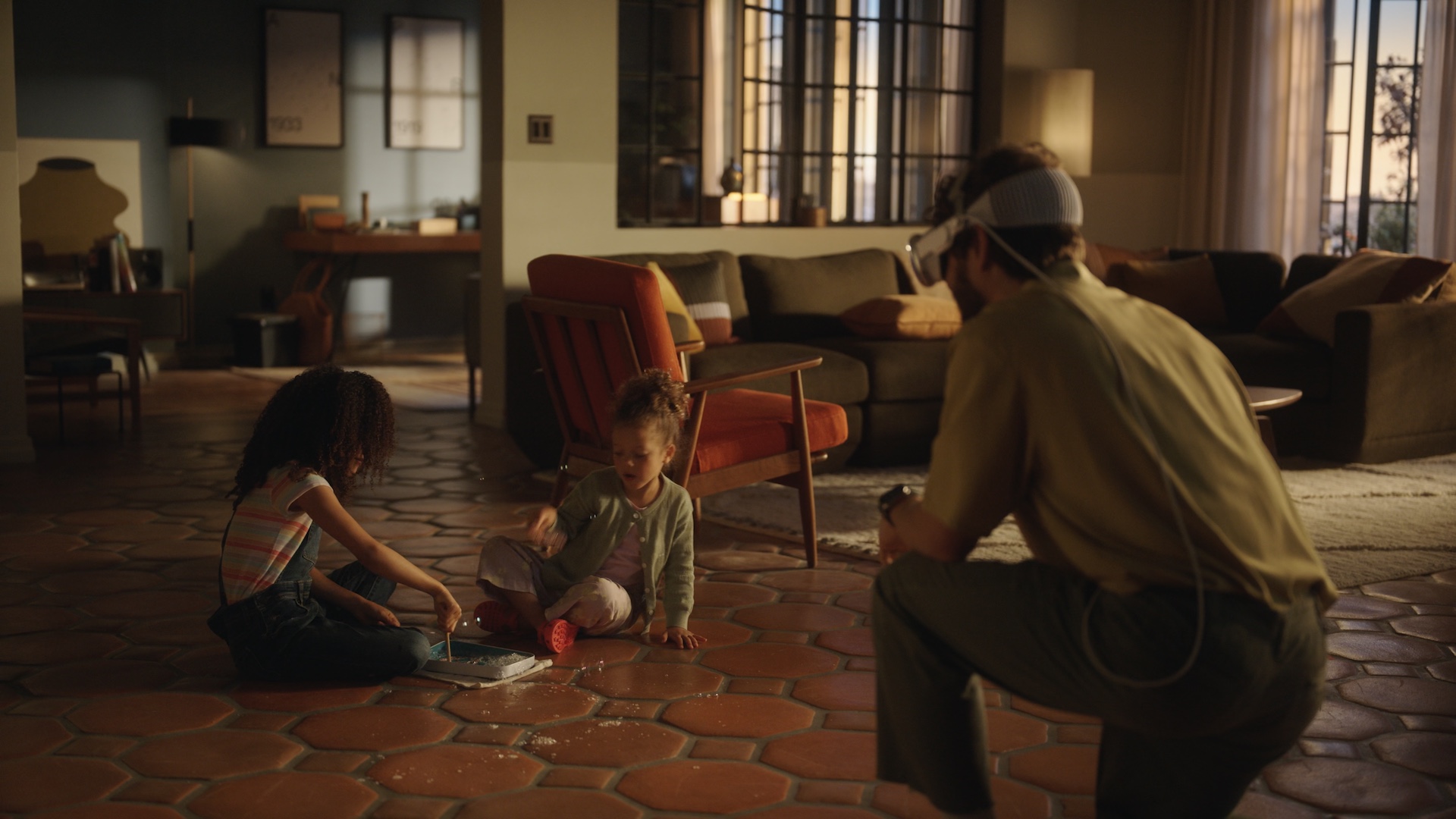
A few hours after Apple's long-awaited Vision Pro reveal yesterday, Bloomberg's Mark Gurman (who managed to report on most of the device's major features months before it launched) noticed something odd: none of Apple's promotional videos or any of the footage from the show floor actually showed Apple CEO Tim Cook or any other Apple executive wearing the new product they had just announced.
The entire presentation encapsulated everything that has changed about Apple product events since the Steve Jobs era—a shift away from onstage speeches to pre-recorded videos, a shift that began earlier in the Cook era and was accelerated by the pandemic. We're way past the iPod in the pocket, or the MacBook Air in the manila envelope—the closest we got was this shot of Cook smiling next to a slick-looking demo unit on a stand, taken after the presentation was over.
But I've noticed something else in the last 24 hours, as initial hands-on impressions have been published by various outlets (ours is here). There are, as far as I can find, no actual photos or videos of any writer or YouTuber wearing the thing they are writing or YouTubing about. (This was a precondition for getting hands-on time with the headset.)

One easy answer? This thing doesn't launch until 2024, and there might still be a little distance between the headset people are shown wearing in pre-approved footage and the one people can actually put on and try out.
But it's just as likely that Apple has looked at AR and VR headset launches over the last decade and decided that it needs to be extremely careful about how the headset is depicted and perceived, especially during this early period before regular people can try one.

Gurman called Cook's decision not to wear the headset "meme control," which is a good way to think about it— Apple doesn't want Vision Pro to become a punchline before it's even out the door. (The Internet will meme what it wants to meme, but Apple is going to try.)
Apple doesn't want the ubiquitous photos of bearded-guys-with-mouth-agape that became a mainstay of early Oculus Rift coverage a decade ago. Apple doesn't want Craig Federighi prancing barefoot across the cover of Time Magazine. Apple doesn't want to recreate that image of Mark Zuckerberg gliding blithely by an auditorium of oblivious people strapped into headsets. Apple doesn't want its very own version of Robert Scoble standing in the shower, nude, wet hair plastered to his skull, screaming about his Google Glass.
The first impression cannot call to mind a Black Mirror episode, or a clueless Silicon Valley C-suite type. The headset cannot be niche, it cannot be uncool. Apple wants to show pleasant-looking composite humans using the headsets in everyday situations while the people around them continue living their normal lives, attempting to will this reality into existence by depicting it over and over again. When seen outside of a pre-approved PR video or image, the headset is totally disembodied as it is in Cook's photo, shiny and futuristic and clean, an enviable bauble.
If Vision Pro eventually succeeds, it will be partly because Apple will have done what it does best: pick an impressive-but-flawed entry point for a new product category and iterate relentlessly until the device becomes the best version of the original concept. But even more than that, it will be because Apple will have normalized strapping a shiny chrome-and-glass brick to your face.

It might be an uphill climb or a tightrope walk (whatever metaphor for difficulty or precarity you want to use). The moment where Apple depicted a person using Vision Pro to film their child's birthday party seemed to strike a particularly icky chord with headset skeptics. Apart from being something that I could never imagine doing in real life (I've got a nearly 4-year-old, and managing a kid's birthday party is an hours-long whirlwind of triaging multiple small kids, cake mishaps, and various adult friends, family members, and in-laws; if I was sitting across a table tethered to my headset I would simply be murdered), I immediately recoil from this image in the kind of "don't we already spend too much time with our screens" way that Apple seems to be trying to avoid.
Apple has normalized this kind of thing before; the very first piping-hot takes about AirPods in 2016 were about how dweeby they looked, and pre-Apple-Watch smartwatches drew a similar sort of ire. But Vision Pro has a much tougher job, putting a large, firmly strapped-on slab of tech directly between you and any other person you might be attempting to interact with, as the battery cord dangles from your head down to your pocket. Unlike most past headsets, Vision Pro wearers will be able to see other people, and other people will be able to see a rendered representation of their eyes. But if the eyes are the windows to the soul, Vision Pro is an extra-dark layer of tint.
This is only the first version of the headset, and some of the cumbersome or awkward things about it can and will be fixed over time. But it's a lot harder to fix a first impression. And Apple is going to unusually great lengths to ensure that Vision Pro becomes the next Apple Watch or AirPod, and not another Google Glass.
Listing image by Oculus
reader comments
245